How life cycle assessments help us compare the environmental impact of fast-food packaging
The success of Deliveroo, Uber Eats and other app-based food delivery services has led to a boom in the consumption of takeaways. A 2023 survey found that 31% of people order takeaways at least once a week and 38% of those aged 18 to 24 order takeaways at least two or three times a week. Of those surveyed, 8% said they expected to order more takeaways in the next year.
All this food is delivered in single-use takeaway containers that have a significant impact on the environment. Alejandro Gallego Schmid and his team at the University of Manchester carried out a life cycle assessment (LCA) of various takeaway container types. They wanted to see if there was a way for consumers to make choices that reduce the environmental impact of their takeaway containers without reducing the number of meals they order to go. The aim of the study was to rank single-use takeaway containers made of different materials according to their environmental impact. The team also looked at whether it is better to take your own reusable container to be filled, where this is an option.
The success of Deliveroo, Uber Eats and other app-based food delivery services has led to a boom in the consumption of takeaways. A 2023 survey (bit.ly/3ukwnBH)found that 31% of people order takeaways at least once a week and 38% of those aged 18 to 24 order takeaways at least two or three times a week. Of those surveyed, 8% said they expected to order more takeaways in the next year.
All this food is delivered in single-use takeaway containers that have a significant impact on the environment. Alejandro Gallego Schmid and his team at the University of Manchester carried out a life cycle assessment (LCA) of various takeaway container types (bit.ly/47VC32U). They wanted to see if there was a way for consumers to make choices that reduce the environmental impact of their takeaway containers without reducing the number of meals they order to go. The aim of the study was to rank single-use takeaway containers made of different materials according to their environmental impact. The team also looked at whether it is better to take your own reusable container to be filled, where this is an option.
The team identified polystyrene containers as the clear winner
LCAs look at the environmental impact of a product from ‘cradle to grave’. Aspects considered include the extraction of raw materials, the manufacture of materials used to make a product, the construction of the product, the environmental impact of a product during its use and what happens to the product at the end of its useful life. Multiple factors are assessed for each element including the depletion of natural resources, contribution to global warming and air pollution, water use and the potential impact of toxic substances emitted to the environment on humans and ecosystems.
By carrying out an LCA, researchers can reduce this huge amount of information to a set of numbers. In this way, the environmental impact of products can be more easily compared. The assessments are also used to identify hot spots – factors that contribute the most to the environmental impact of products. Identification of hot spots further simplifies comparisons. They are also important for manufacturers looking to reduce the environmental impact of their products, as it means they know where to direct their focus to have the biggest benefit.
In your class
LCAs are included in most curriculums and provide a great opportunity to demonstrate everyday applications of science. Use examples of real studies like this in your teaching to illustrate. Ask learners to consider how information is collected and evaluated to help retailers, consumers and even governments make better choices for a sustainable future. Use the resource accompanying this article to provide another example study on shopping bags.
Comparing single-use containers
Alejandro and his team compared three common single-use takeaway containers: aluminium, poly(propene) and extruded poly(phenylethene), commonly called polystyrene. Typical uses for the first two include Chinese and Indian food and, for the latter, burgers. The researchers looked at 12 environmental impacts across the life cycle of each type of food container.
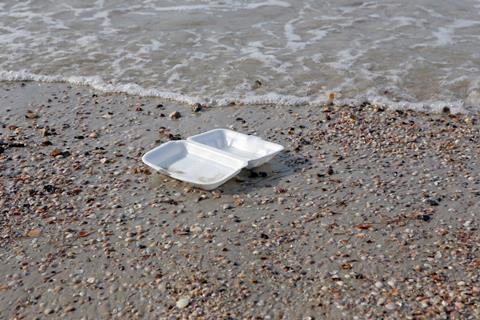
The team identified polystyrene containers as the clear winner from an environmental standpoint. The findings are most easily understood by looking at the two hotspots identified by the team’s LCAs: the amount of raw materials and how much electricity is used during their production. These hotspots were the same for all three container types.
A poly(propene), commonly referred to as polypropylene, container contains 31.5 g of raw materials, while a polystyrene and an aluminium container each contain fewer than 8 g. The clamshell polystyrene foam containers consist of about 95% air, explains Alejandro. In terms of energy use during manufacture, polypropylene topped the list again. But in this category, there was a clear difference between aluminium and polystyrene. The production of aluminium containers consumes about three times as much energy as that of polystyrene containers.
These results might seem surprising at first because, as consumers, we’ve been programmed to think of recycling potential when considering the sustainability of materials. We can collect aluminium and polypropylene containers for recycling at the kerbside, but not polystyrene. The team did, however, consider recycling potential in the analysis (as is standard for LCAs). ‘We took the average of end of life [options] in the European Union,’ says Alejandro. Low average recycling rates are a contributing factor as to why polystyrene came out so well in the assessment, with only 11% of polypropylene items and 54% of aluminium items being recycled on average.
Bring your own
The researchers also investigated the environmental impact of reusable polypropylene food containers. Some restaurants have started actively encouraging their customers to bring their own containers to be filled up on the premise that it’s better for the environment. ‘We wanted to know if that was really true,’ says Alejandro.
Until the 1990s, it was the norm for milk to be delivered in glass bottles to the doorstep, with milkmen taking away the empties for refilling
Each reusable polypropylene food container uses over 140 g of raw materials, and the energy used in its manufacture is more than 13 times as much as for a polystyrene container. The researchers found that, overall, a reusable container would have to be reused between 16 and 208 times (depending on which impact is considered) to have the same environmental impact as a single-use polystyrene container.
Similar results have previously been reported for takeaway coffee cups, with one study finding that a reusable cup must be used between 20 and 100 times to offset its higher greenhouse gas emissions compared to a disposable cup.
Similar results have previously been reported for takeaway coffee cups, with one study (bit.ly/42lIyLf) finding that a reusable cup must be used between 20 and 100 times to offset its higher greenhouse gas emissions compared to a disposable cup.
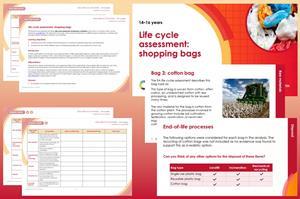
Download this
Life cycle assessment of shopping bags, for age range 14–16
Based on the Environment Agency study that led to the carrier bag charge in the UK, learners are asked to find and evaluate key information about each stage in the life cycle of three types of shopping bag.
Resources include:
Download this
Shopping bag LCA, for age range 14–16
Based on the Environment Agency study that led to the carrier bag charge in the UK, learners are asked to find and evaluate key information about each stage in the life cycle of three types of shopping bag.
Download the resources from the Education in Chemistry website: rsc.li/49Cqor9
A word of caution
There is one very important caveat here. LCAs do not currently consider the impact of plastic takeaway containers in the ocean. This is because the data is not yet available to quantify their various impacts in these environments.
Recent years have seen an explosion of public awareness about ocean plastic. Globally, plastic single-use food containers and cutlery have been identified as the third-most frequently found types of plastic items in the ocean. Overall, these items account for more than 9% of global ocean litter. ‘We don’t yet know exactly what impacts [these takeaway containers in the oceans have] on humans, on ecotoxicity, etcetera,’ says Alejandro. His hunch, however, is that once LCAs account for plastic waste in the oceans, polystyrene will no longer look like such a good option and reusable containers will be the preferred option.
Recent years have seen an explosion of public awareness about ocean plastic. Globally, plastic single-use food containers and cutlery have been identified as the third-most frequently found types of plastic items in the ocean (bit.ly/3w1ydrM). Overall, these items account for more than 9% of global ocean litter. ‘We don’t yet know exactly what impacts [these takeaway containers in the oceans have] on humans, on ecotoxicity, etcetera,’ says Alejandro. His hunch, however, is that once LCAs account for plastic waste in the oceans, polystyrene will no longer look like such a good option and reusable containers will be the preferred option.
A circular future
If we accept the assumption that reusing takeaway containers is the best option, then how do we ensure that they are reused sufficiently often to offset their environmental impact? People bringing their own containers to restaurants to get takeaway food poses several logistical challenges. These include the need for consumers to remember their containers and the fact that those using delivery services can’t participate in the scheme.
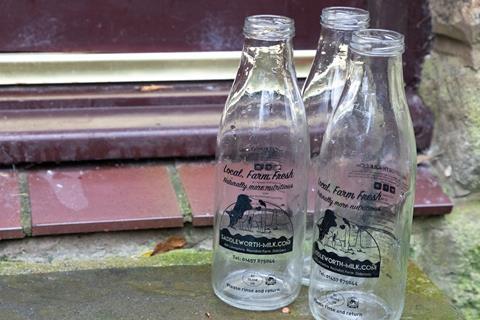
The answer, according to Alejandro, is schemes where large numbers of restaurants in the same town or city collaborate to share reusable takeaway containers. Customers pay a small fee for having their food in reusable containers – money they get back when they return the containers to any one of the participating restaurants. A takeaway delivery driver could also pick up these containers when delivering the next takeaway. These schemes would ‘make things very easy for the consumer,’ says Alejandro.
This is not a novel concept. Until the 1990s, it was the norm for milk to be delivered in glass bottles to the doorstep, with milkmen taking away the empties for refilling. It also used to be commonplace to return empty glass fizzy drink bottles to shops to get a deposit back. These types of schemes have started to reappear in recent years as the environmental benefits become apparent. In Switzerland, a large-scale deposit return scheme for takeaway containers called reCIRCLE has been implemented. Hundreds of Swiss restaurants participate and the scheme has recently been introduced in neighbouring countries.
More resources
- For LCAs of different products, try these activities based on period products and fashion with your 14–16 learners.
- Find ideas on teaching about sustainable production and consumption, and use the worksheet to get your students to research and reflect on their own habits.
- Use science research news slides to show learners how scientists are finding ways to reduce environmental impact by improving plastics recycling or turning plastic bottles into jet fuel.
- Introduce your students to sustainable chemist Raquel who saves waste pineapple leaves from being burned by turning them into fabric.
More resources
- For another LCA, try these activities on fashion with your 14–16 learners: rsc.li/42soNBQ
- Find ideas on teaching about sustainable production and consumption, and use the worksheet to get your students to research and reflect on their own habits: rsc.li/494Mu5K
- Use science research news slides to show learners how scientists are finding ways to reducing environmental impact by turning plastic bottles into jet fuel: rsc.li/3UqCWNM
- Introduce your students to sustainable chemist Raquel who saves waste pineapple leaves from being burned by turning them into fabric: rsc.li/3umkgUL
So what kind of material should these reusable containers be made from? Alejandro and his team carried out an LCA to compare reusable polypropylene food containers with those made of glass. They found that due to their higher weights, the glass containers have 12–64% higher environmental impacts (depending on which impact is considered) than the reusable polypropylene containers. This means the glass containers need to be used 1.3–3.5 times more to match the overall environmental impact of plastic containers. ‘The glass is much heavier [meaning] there are many more emissions in the transport, et cetera,’ says Alejandro.
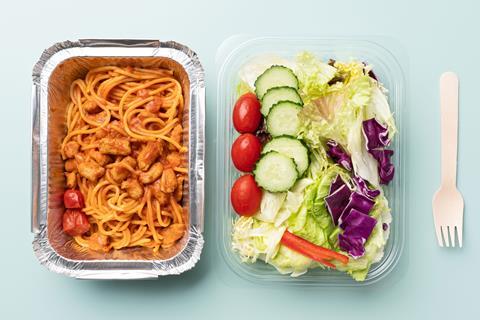
The takeaways
LCAs are an excellent tool for simplifying the process of comparing the environmental impact of products. They do, however, have some pitfalls, such as their current inability to consider the harm caused by plastic waste in the ocean. There is no simple answer to what types of takeaway containers are the least harmful. Nevertheless, where possible, we should choose schemes that allow takeaway containers to be reused many times. Also, policymakers should support and enable more schemes of this type to come to fruition.
For consumers, there are other things we can do to reduce the environmental impact of our takeaways. Don’t buy reusable containers unless you are committed to reusing them many, many times. Buying them on a whim and then leaving them to languish at the back of the cupboard does more harm than good. As for single-use takeaway containers, make sure they are disposed of correctly. Aluminium and polypropylene containers should be recycled and polystyrene containers must end their life in a landfill site or an incinerator – not in the ocean.
Article by freelance science writer Nina Notman. Resource by Kirsty Patterson.




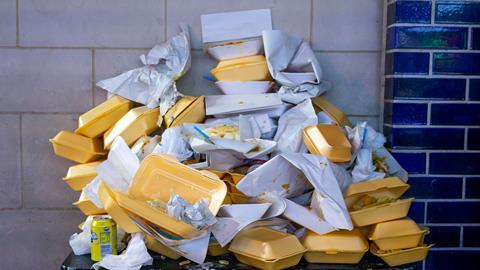

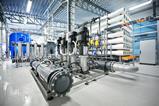








No comments yet